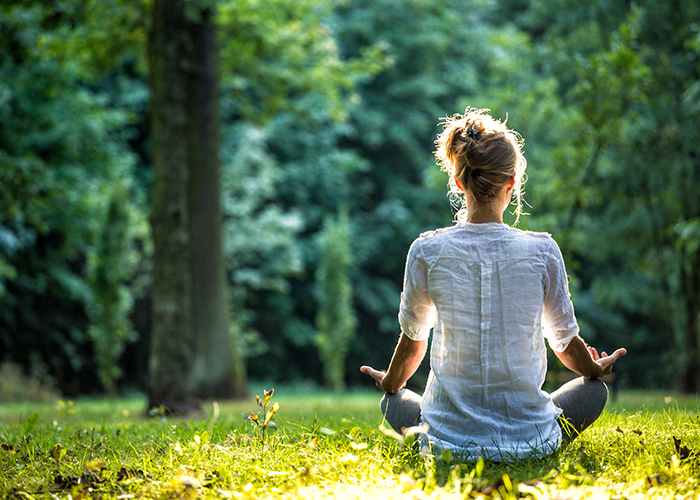Taking care of you: Modern day self-care
Posted on September 27, 2018 at 6:00 am
by Susan Goertz
September means many things to many people—leaves changing color, shortening days, pumpkin spice everything.
Did you know that September is also Self-Care Awareness Month?
You wouldn’t think people would need tips on how to take it easy and pamper themselves. How hard can it be to slow down and breathe, right? Yet so many of us struggle.
Are you a procrastinating meditator like me? Want a guru but can’t afford to hire one or move to an ashram for a month? I’ve been there.
There are other ways to pamper yourself. And I’d like to share the abundance of goodies (and goodness) to be found at your local library to spur your path to inner peace.
Sometimes the hardest part of self-care is being able to make healthy practices a habit and priority. We know what to do. We know it is good for us. We know we can’t take care of everyone else if we falter in caring for ourselves. Yet we struggle to find the time.
With that in mind, I would like to recommend a fantastic book on the subject of how habits work and how they can be changed: The Power of Habit by Charles Duhigg. Full of lovely examples of how little changes can lead to big results, this book really helped me take the plunge on developing and consistently practicing healthy habits.
Since self-care is a pretty broad topic, I’d like to focus on the two aspects I’ve attempted to work into my daily routine for years: mindfulness and meditation.
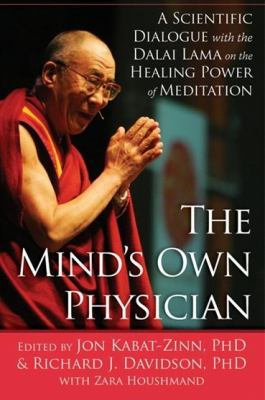 Let’s start with mindfulness. I was first introduced to the concept in The Mind’s Own Physician: A Scientific Dialogue with the Dalai Lama on the Healing Power of Meditation edited by Jon Kabat-Zinn and Richard J. Davidson. Kabat-Zinn and Davidson define being mindful, or mindfulness, as paying attention in a particular way: on purpose, in the present moment, and non-judgmentally. I found this book to be a wonderful and empowering introduction, with really great science-based explanations on how these practices improve our mental and overall health. If you are new to these concepts and wondering “why bother?” this book may convince you.
Let’s start with mindfulness. I was first introduced to the concept in The Mind’s Own Physician: A Scientific Dialogue with the Dalai Lama on the Healing Power of Meditation edited by Jon Kabat-Zinn and Richard J. Davidson. Kabat-Zinn and Davidson define being mindful, or mindfulness, as paying attention in a particular way: on purpose, in the present moment, and non-judgmentally. I found this book to be a wonderful and empowering introduction, with really great science-based explanations on how these practices improve our mental and overall health. If you are new to these concepts and wondering “why bother?” this book may convince you.
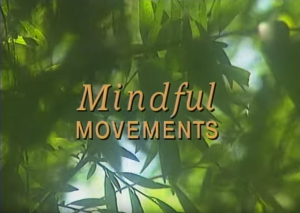 I want to incorporate mindfulness into my daily life, but I have a hard time sitting still. While searching for an active mindful practice I discovered “Mindful Movements,” a series of 10 mindfulness exercises that take about 15 minutes to complete, no special equipment necessary. This is the perfect length of time to fit them in when I get up in the morning, or on a work break. Designed by Thich Nhat Hanh, the Vietnamese Buddhist monk, author, peace activist, and teacher, who first gained worldwide recognition during the Vietnam War, these movements are intended for just about any fitness level.
I want to incorporate mindfulness into my daily life, but I have a hard time sitting still. While searching for an active mindful practice I discovered “Mindful Movements,” a series of 10 mindfulness exercises that take about 15 minutes to complete, no special equipment necessary. This is the perfect length of time to fit them in when I get up in the morning, or on a work break. Designed by Thich Nhat Hanh, the Vietnamese Buddhist monk, author, peace activist, and teacher, who first gained worldwide recognition during the Vietnam War, these movements are intended for just about any fitness level.
Only in the last six months have I been able to make Mindful Movements a consistent habit. I confess, I’ve missed some days. But the days I skip it, I invariably miss the feeling of inner calm the movements help me cultivate. And I double up the next day.
Mindful Movements has helped me hone many skills. I’m more attuned to my body and how it reacts a little differently every day. My joints are stronger and I feel like I move more gracefully. On cold days the movements even help me warm up. I’m better at being present, focusing only on my body rather than being constantly pulled away by distractions. I still observe the distractions, yet I’m able to avoid engaging in them. Pretty great results.
I think I achieve a semi-meditative state with this practice, yet full mindfulness still seems a bit out of reach. And I’ve found some great reads at the library to help me further my practice.
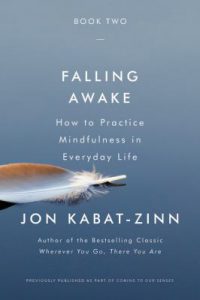 I’m very excited to get my hands on one of Jon Kabat-Zinn’s newer works: Falling Awake: How to Practice Mindfulness in Everyday Life. It is the sequel to Meditation Is Not What You Think, which is also fantastic. Sometimes it is easiest to include mindfulness practices in the evenings, when we are naturally winding down. Or maybe we are still struggling to wind down at 1am and tomorrow is a busy day. Tzivia Gover’s The Mindful Way to a Good Night’s Sleep has great ideas on how to create a consistent, peaceful sleep routine.
I’m very excited to get my hands on one of Jon Kabat-Zinn’s newer works: Falling Awake: How to Practice Mindfulness in Everyday Life. It is the sequel to Meditation Is Not What You Think, which is also fantastic. Sometimes it is easiest to include mindfulness practices in the evenings, when we are naturally winding down. Or maybe we are still struggling to wind down at 1am and tomorrow is a busy day. Tzivia Gover’s The Mindful Way to a Good Night’s Sleep has great ideas on how to create a consistent, peaceful sleep routine.
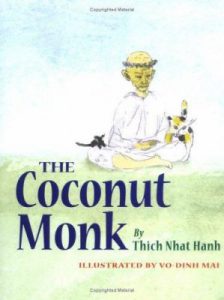 Whether you are unfamiliar or aware with the works of Thich Nhat Hanh, I can’t recommend them highly enough. He is a bit of an idol for me, as well as a leading world authority on mindfulness and meditation. Martin Luther King even nominated Thich for the Nobel Peace Prize in 1967 after befriending him in 1966. The library has dozens of his books. The Coconut Monk and The Hermit and the Well are wonderful books geared towards introducing mindfulness and compassion to children. My personal favorites for the adult set are Peace Is Every Step: The Path of Mindfulness in Everyday Life and No Mud, No Lotus: The Art of Transforming Suffering.
Whether you are unfamiliar or aware with the works of Thich Nhat Hanh, I can’t recommend them highly enough. He is a bit of an idol for me, as well as a leading world authority on mindfulness and meditation. Martin Luther King even nominated Thich for the Nobel Peace Prize in 1967 after befriending him in 1966. The library has dozens of his books. The Coconut Monk and The Hermit and the Well are wonderful books geared towards introducing mindfulness and compassion to children. My personal favorites for the adult set are Peace Is Every Step: The Path of Mindfulness in Everyday Life and No Mud, No Lotus: The Art of Transforming Suffering.
Mindfulness is only one form in a wide array of mental practices that falls under the term meditation. Meditation can be defined as a practice of concentrated focus upon a sound, object, visualization, the breath, movement, or attention itself in order to increase awareness of the present moment, reduce stress, promote relaxation, and enhance personal and spiritual growth.
 A great starting point for people who have always been drawn to meditation yet never actually tried it or tried it but never successfully made it a practice is Meditation for Fidgety Skeptics : A 10% Happier How-To Book by Dan Harris and Jeff Warren. Harris and Warren can shoot down every excuse you might have, or at least they did for me, with science-based life hacks.
A great starting point for people who have always been drawn to meditation yet never actually tried it or tried it but never successfully made it a practice is Meditation for Fidgety Skeptics : A 10% Happier How-To Book by Dan Harris and Jeff Warren. Harris and Warren can shoot down every excuse you might have, or at least they did for me, with science-based life hacks.
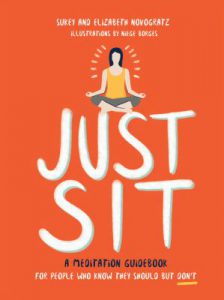 Another delightful introduction to meditation with some charmingly lighthearted yet informative illustrations is Just Sit: A Meditation Guidebook for People Who Know They Should But Don’t by Sukey Novogratz and Elizabeth Novogratz.
Another delightful introduction to meditation with some charmingly lighthearted yet informative illustrations is Just Sit: A Meditation Guidebook for People Who Know They Should But Don’t by Sukey Novogratz and Elizabeth Novogratz.
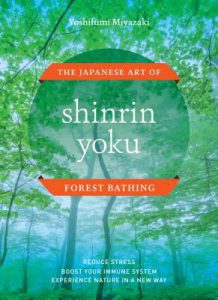 Thich Nhat Hanh also developed Walking Meditation, a form of active meditation. For those of us who have trouble sitting still, much less clearing our thoughts, this is a wonderful practice. Another form of moving meditation I only discovered last year thanks to a very inspiring coworker is called Shinrin-Yoku, which translates to “Forest Bathing”. If you find this concept intriguing, I recommend reading Shinrin-Yoku: The Japanese Art of Forest Bathing by Yoshifumi Miyazaki. If you like this idea but aren’t sure where to find a worthy forest, try reading Forest Bathing: How Trees Can Help You Find Health and Happiness by Dr. Qing Li. It’s a delightful book with over 100 forest photos in which to bath your senses while staying inside.
Thich Nhat Hanh also developed Walking Meditation, a form of active meditation. For those of us who have trouble sitting still, much less clearing our thoughts, this is a wonderful practice. Another form of moving meditation I only discovered last year thanks to a very inspiring coworker is called Shinrin-Yoku, which translates to “Forest Bathing”. If you find this concept intriguing, I recommend reading Shinrin-Yoku: The Japanese Art of Forest Bathing by Yoshifumi Miyazaki. If you like this idea but aren’t sure where to find a worthy forest, try reading Forest Bathing: How Trees Can Help You Find Health and Happiness by Dr. Qing Li. It’s a delightful book with over 100 forest photos in which to bath your senses while staying inside.
Self-care is all about finding what works for you. If mindfulness and meditation don’t appeal to you, no worries. There are literally hundreds of titles available on mindful topics, including aromatherapy, yoga breathing, mindful eating, and downsizing clutter.
It took me long time to accept the idea that self-care isn’t selfish. It is a survival skill. It is a necessary step in cultivating a healthy, happy, loving you. A soothing balm to smooth over the anxiety and stress that is part of the modern world. We are all walking wounded, no matter how well we may hide the pain. Self-care is a practice that allows you to nurture and heal yourself.
Knowing you can access self-care and heal yourself at any time is incredibly empowering. From one inconsistent self-caregiver to another, I applaud your efforts. May the calm be with you!

Tags: adults, aromatherapy, books, breathing, clutter, downsizing, fidgety, fidgety meditation, health, healthy happy, meditation, mindful eating, mindfulness, parents, relaxation, science, self-care, self-caregiver, skeptics, sleep, stress, walking, yoga, yoga breathing

